Botanical Name: Amelanchier alnifolia
Common Name: saskatoon, serviceberry
Family: Rosaceae
Distribution/Origin: British Columbia, Alberta, Saskatchewan, Manitoba
Leaf: ovate, rounded apex, toothed/serrate margins, flat green
Bud: alternate
Flower: 5 petals, clustered racemes
Fruit/Seed: small purple pomme,
Stem/Bark: orange to brown, prominent lenticels
Size: 3-26’ height, 10-13’ spread
Habit: suckering, spreading
Form: clumping, upright
Soil conditions: organic, deep, adaptable, well drained
Moisture: moderate
Sun: full sun to partial shade
Exposure: excellent hardiness range, needs full sun for prolific fruiting
Landscape use: fall interest, fragrant, wildlife attractant, mixed shrub border, reclamation, spring interest, urban agriculture, woodland margin
Notes: may produce fruit for up to 30 years. The city Saskatoon is named after the berry :)
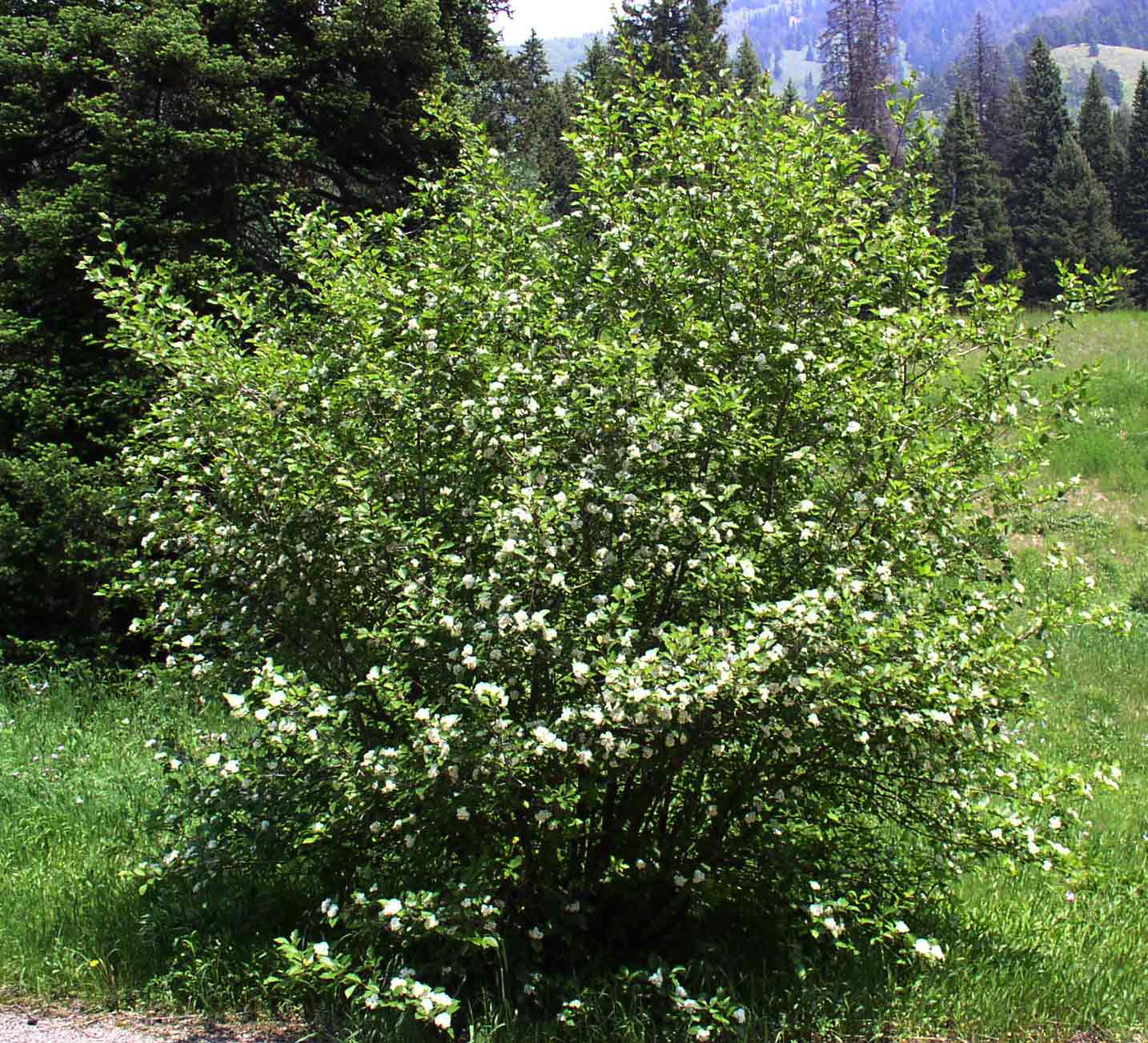



Botanical Name: Arbutus menziesii
Common Name: arbutus
Family: Ericaceae
Distribution/Origin: British Columbia, North America
Leaf: simple, leathery texture, glabrous surfaces, oblong with acute apices, entire to serrate margins
Bud: alternate
Flower: floriferous panicles, urceolate shape, white, showy
Fruit/Seed: orange to red, drupe (Sep-Oct)
Stem/Bark: exfoliating reddish brown, greenish brown inner bark
Size: 70-100’ height, 30-50’ spread
Habit: spreading, upright
Form: oval-vertical
Soil conditions: rocky, gravelly, well drained
Moisture: low, summer dry
Sun: full sun
Exposure:
Landscape use: native planting, wildlife food, shade tree, specimen, attractive bark, tall background, winter interest, woodland margin
Notes: fruits dry up and have hooked barbs that attach to animals for distribution. Very hard and dense wood that burns long (even better than oak)
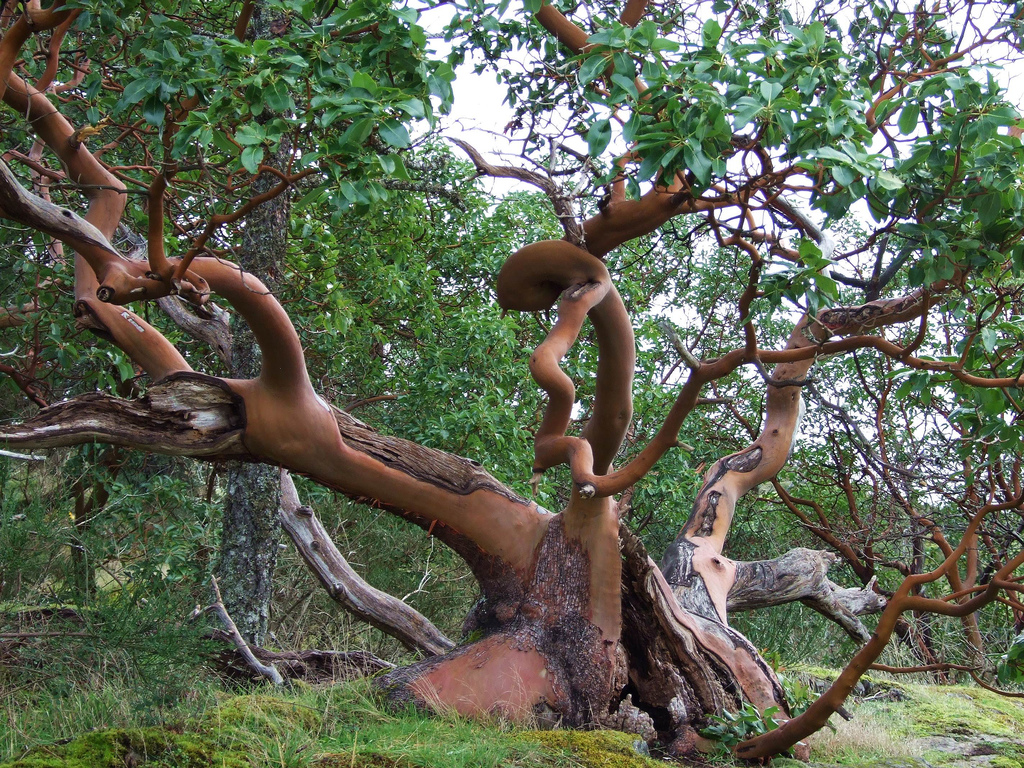
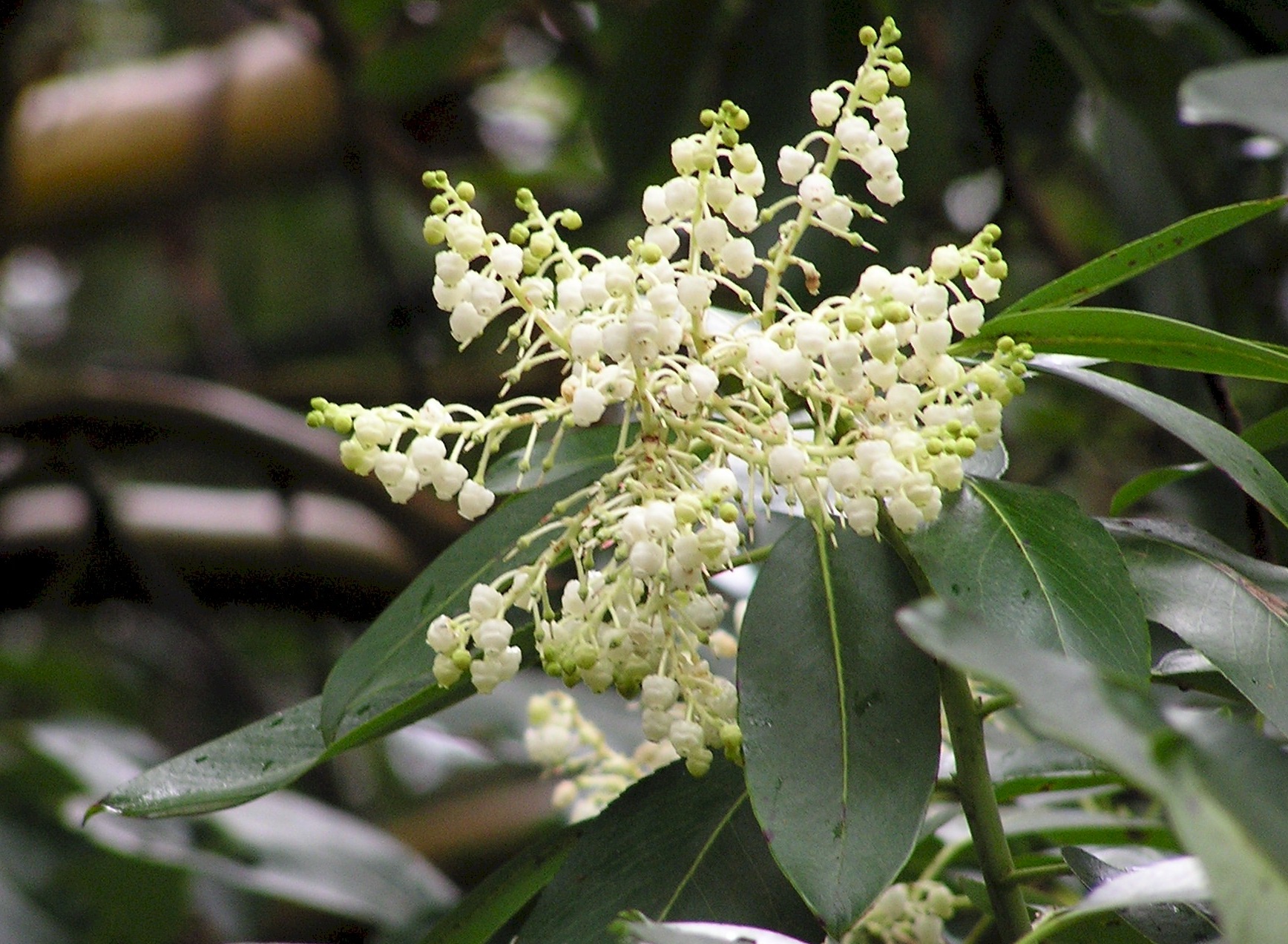


Botanical Name: Arctostaphylos columbiana
Common Name: hairy manzanita
Family: Ericaceae
Distribution/Origin: North America (western coast B.C-California)
Leaf: simple, leathery, ovate to elliptic, entire margins, dull green to blue green, hairy surfaces and petioles, leaves have upright posture
Bud: alternate
Flower: small, white, urn shaped, perfect, terminal clusters
Fruit/Seed: red drupe, seeds require fire or animal consumption to germinate
Stem/Bark: exfoliating, cinnamon colored smooth bark beneath (lovely!), young twigs are grey and hairy
Size: up to 10’ height, 5-10’ spread
Habit: branches have twist, spreading
Form: mounding, upright
Soil conditions: sandy light, well drained
Moisture: medium
Sun: full sun to light shade
Exposure: is not salt tolerant
Landscape use: naturalized areas, woodland margin, shrubby borders
Notes:
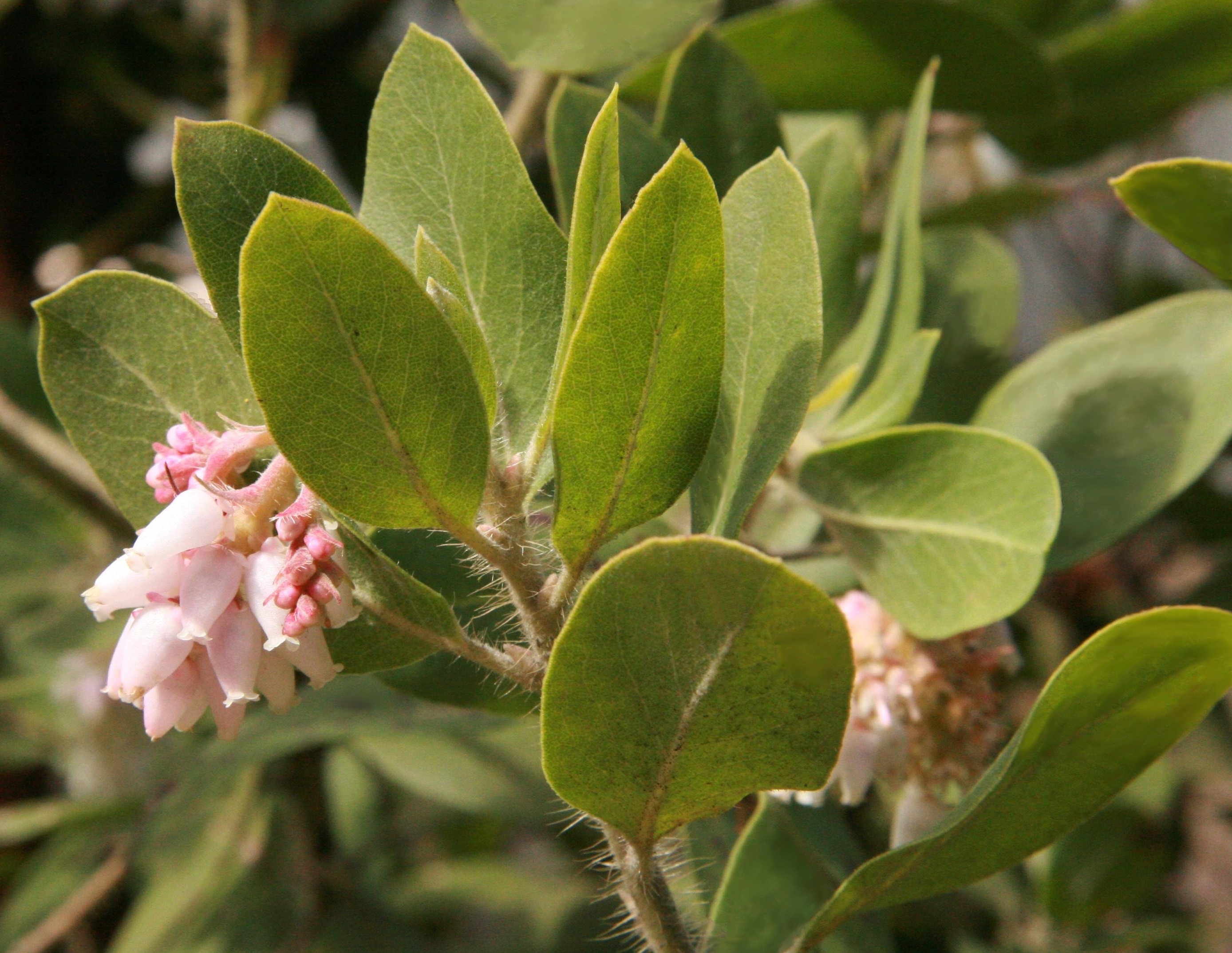
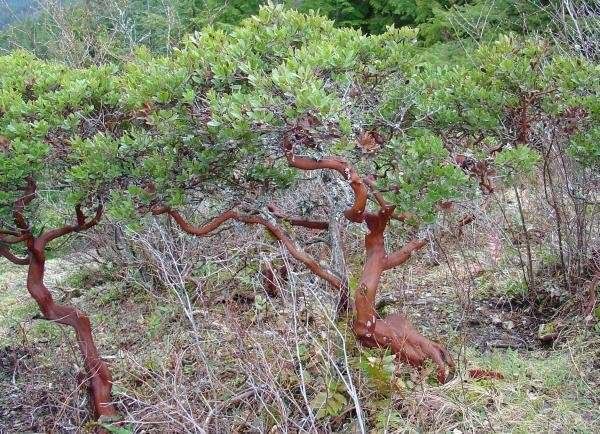


Botanical Name: Arctostaphylos x media
Common Name: media manzanita, hybrid manzanita
Family: Ericaceae
Distribution/Origin: garden origin
Leaf: leathery, obovate, greenish blue
Bud: alternate
Flower: pink clusters, racemes
Fruit/Seed: red drupe
Stem/Bark: smooth reddish stems, brown bark in maturity, multi stemmed
Size: 2-5’ height, 6-8’ spread
Habit: spreading, dense
Form: mounding
Soil conditions: average, adaptable, well drained
Moisture: average
Sun: full sun to partial shade
Exposure: drought tolerant
Landscape use: seaside, erosion control, native plantings, rock gardens, beds
Notes:



Botanical Name: Arctostaphylos uva-ursi 'Vancouver Jade'
Common Name: kinnikinnick
Family: Ericaceae
Distribution/Origin: Canada
Leaf: oblong-obovate, cuneate bases, glabrous/lustrous surfaces, green
Bud: alternate
Flower: floriferous racemes, urceolate, showy, white (April-May)
Fruit/Seed: red drupe
Stem/Bark: exfoliating, reddish brown
Size: up to 8” height, 40-60” spread
Habit: groundcover, creeping
Form: horizontal, mat like
Soil conditions: well draining, sandy, acidic
Moisture: dry to moist
Sun: full sun to partial shade
Exposure: susceptible to fungal leaf spot, rust, galls
Landscape use: groundcover, naturalized areas, beds, borders, containers
Notes: a Saskatchewan favorite!




Botanical Name: Empetrum nigrum
Common Name: crowberry
Family: Ericaceae
Distribution/Origin: western Canada, northwestern US
Leaf: needle like, succulent texture, linear shape, entire margins
Bud: alternate
Flower: solitary, not showy, white, not radially symmetrical
Fruit/Seed: drupe, black to purple
Stem/Bark: thin and smooth
Size: up to 8” height, up to 1’ spread
Habit: creeping
Form: mat like
Soil conditions: average, acidic, adaptable
Moisture: wet
Sun: filtered shade, part sun
Exposure: dry to moist
Landscape use: dry gardens, beneficial insects, wildlife attractant, groundcover, wetland-bogs, rock gardens
Notes: in Labrador the stems and bark are burnt and used to smoke fish




Botanical Name: Gaultheria shallon
Common Name: salal
Family: Ericaceae
Distribution/Origin: North America (BC, NW US)
Leaf: simple, ovate, green, dentate margins
Bud: alternate
Flower: floriferous racemes, urceolate, showy white to pink (April-May)
Fruit/Seed: black to blue berry, multi seeded
Stem/Bark: multi stemmed, red to tan
Size: 6-10’ height, 15-20’ spread
Habit: dense, irregular, spreading
Form: mounded, oval, horizontal
Soil conditions: acidic, well drained, rich
Moisture: moderate
Sun: filtered shade, full sun
Exposure:
Landscape use: cut flower or foliage, erosion control, group or mass planting, herb, mixed shrub border, reclamation, woodland margin
Notes:

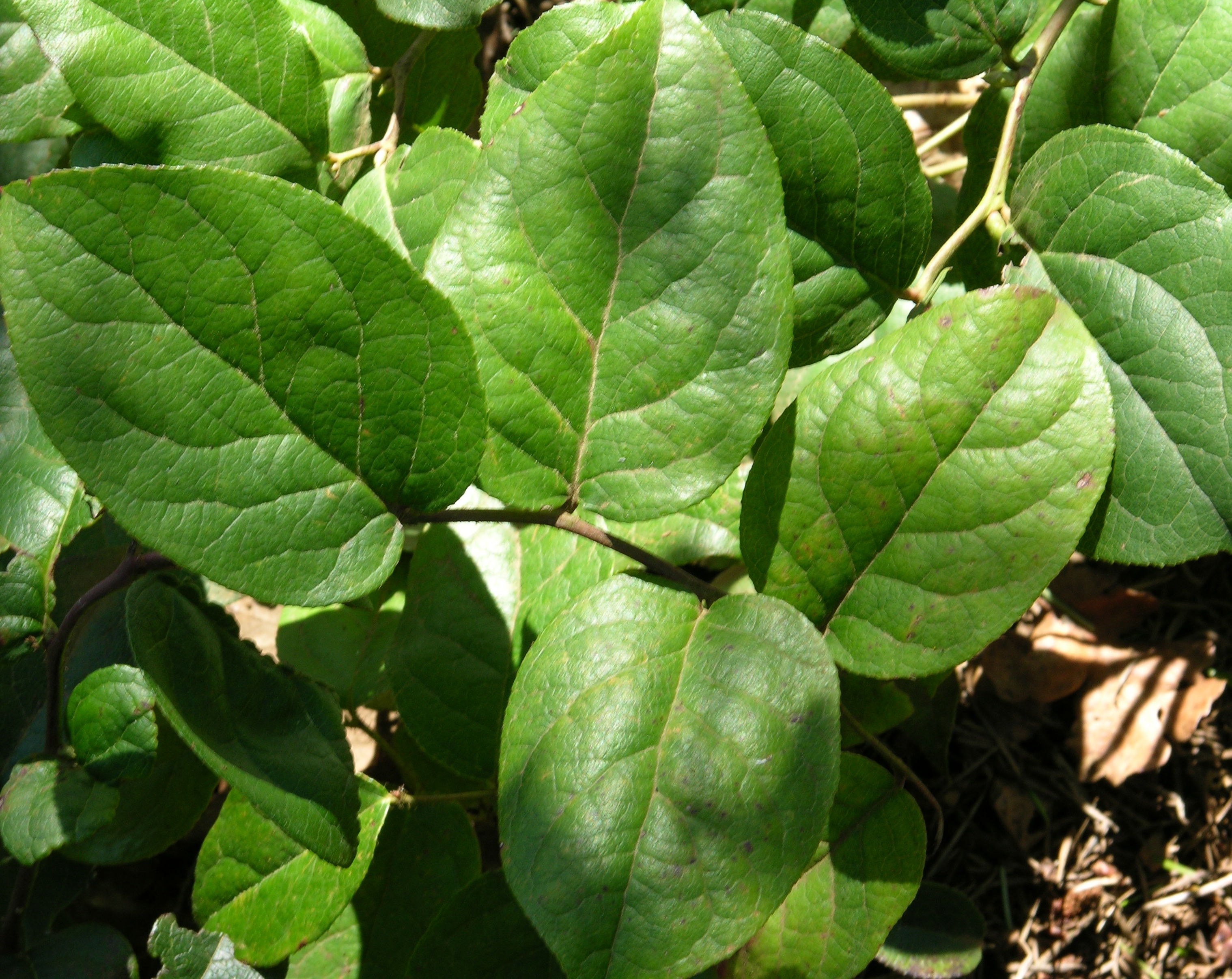


Botanical Name: Oemleria cerasiformis
Common Name: osoberry, indian plum
Family: Rosaceae
Distribution/Origin: British Columbia
Leaf: pinnate venation, lanceolate to oblong, entire to undulate margins, bright green
Bud: alternate
Flower: floriferous raceme, fragrant, white to green, showy, (April-May)
Fruit/Seed: blue to black drupe
Stem/Bark: smooth, prominent lenticels, brown. multi stemmed
Size: 10-15’ height, 3-5’ spread
Habit: twiggy, upright
Form: oval, vertical
Soil conditions: acidic, well drained
Moisture: moderate
Sun: full sun to partial shade
Exposure:
Landscape use: attracts birds, mixed shrub border, specimen plant, summer interest, woodland margin
Notes:
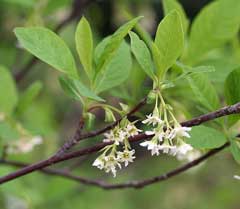
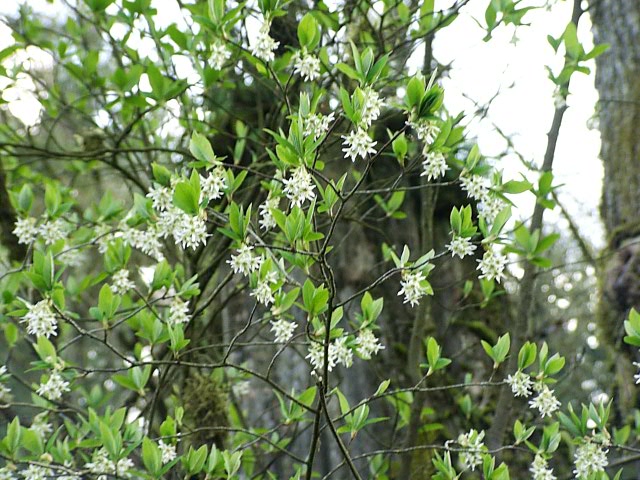

Botanical Name: Philadelphus lewisii
Common Name: wild mock orange, Lewis mockorange
Family: Hydrangeaceae
Distribution/Origin: western North America
Leaf: lightly tomentose, wavy margins, twisted petioles, elliptic to ovate, heavy venation
Bud: opposite
Flower: 4 petaled racemes, showy white, scented, May-June
Fruit/Seed: small brown capsules, splits into 4
Stem/Bark: exfoliating in small pieces, tan to brown, multi stemmed
Size: 6-10’ height, 5-7’ spread
Habit: stiffly upright
Form: oval-vertical
Soil conditions: adaptable, well drained
Moisture: dry to moist
Sun: full sun to partial
Exposure: tolerant of poor soils
Landscape use: fragrance, mixed shrub borders, small garden space, specimen plant, woodland margin
Notes: bark contains saponins, which were mixed with water to make a mild soap
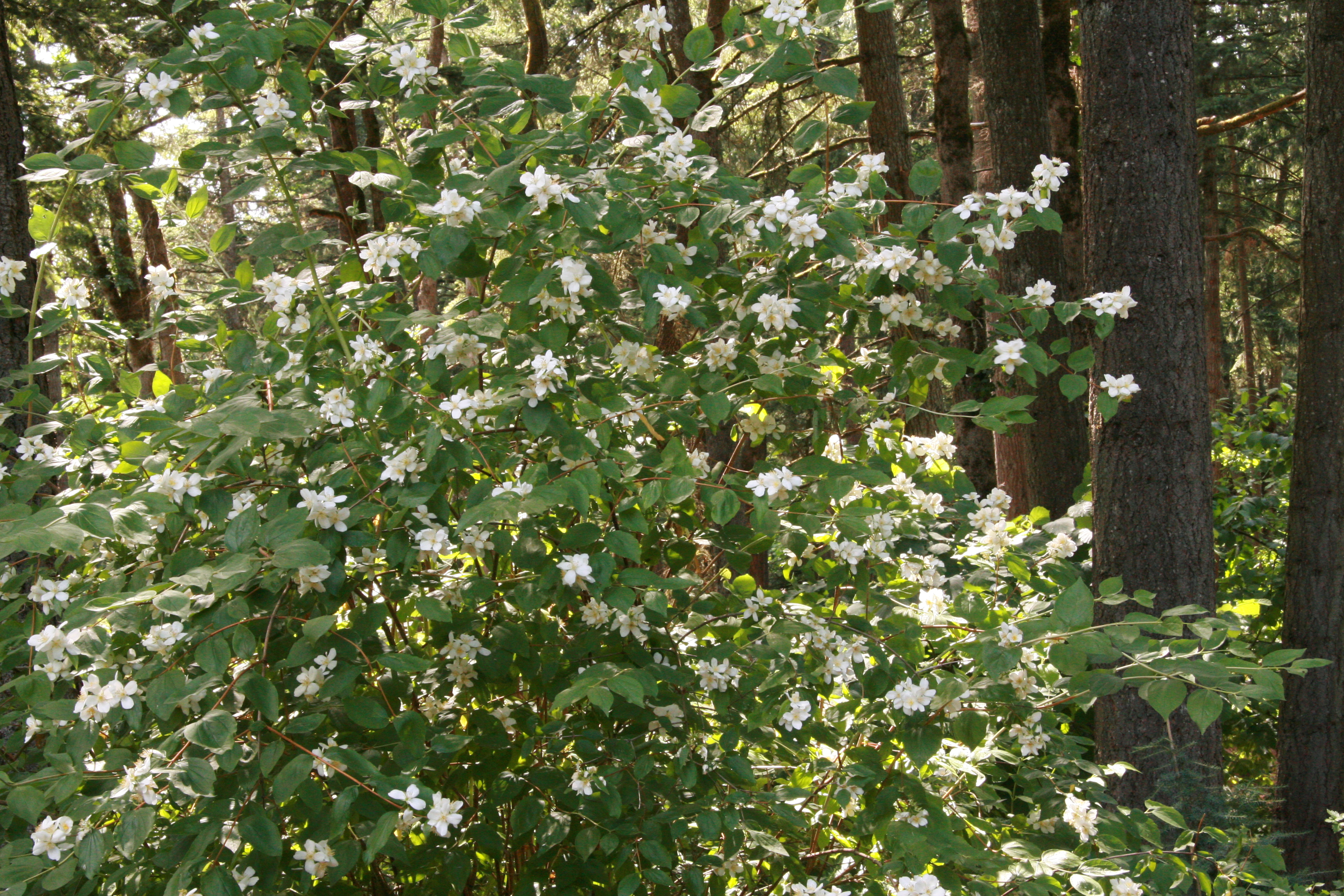



Botanical Name: Phyllodoce empetriformis
Common Name: pink mountain heath, pink mountain heather
Family: Ericaceae
Distribution/Origin: western North America
Leaf: linear, entire or glandular serrulate margins, bottlebrush like arrangement
Bud: alternate
Flower: corymbiform, campanulate, pink, nodding
Fruit/Seed: 5 valved capsules, globose
Stem/Bark: hairy stems, rough exfoliating bark
Size: 6-12” height, 18-24” spread
Habit: erect, dense
Form: mat like, clumps
Soil conditions: sandy loams, gritty
Moisture: moist to wet
Sun: full sun, partial shade
Exposure:
Landscape use: naturalized areas, mixed borders, mass plantings
Notes:

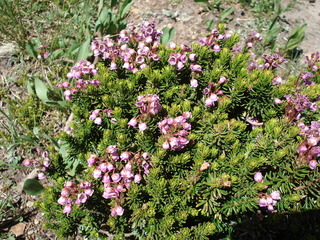


Botanical Name: Ribes sanguineum 'White Icicle'
Common Name: flowering currant, winter currant
Family: Grossulariaceae
Distribution/Origin: western BC
Leaf: lobed, simple, pubescent surfaces, orbicular to ovate, yellow green, palmately lobed
Bud: alternate
Flower: raceme, tubular shape, white pink to red, April-May
Fruit/Seed: blue to black berry
Stem/Bark: smooth, red-brown to grey
Size: 6-10’ height, 5-7’ spread
Habit: stiffly upright
Form: oval-vertical
Soil conditions: organic, well drained
Moisture: moderate
Sun: full sun to partial shade
Exposure:
Landscape use: group or mass planting
Notes:

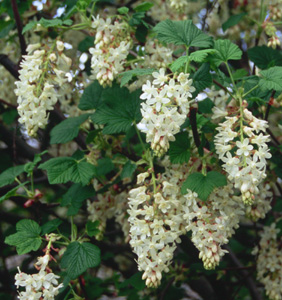


Botanical Name: Rhododendron albiflorum
Common Name: white rhododendron
Family: Ericaceae
Distribution/Origin: western North America
Leaf: simple, obovate to elliptical
Bud: alternate
Flower: pendulate, scented, white, 5 petaled, fused at base
Fruit/Seed: capsules borne on erect pedicels
Stem/Bark: smooth to lightly furrowed, brown
Size: 3-7’ height,
Habit: upright, tends to deviate to one direction due to snow pack (in wild)
Form: thicket
Soil conditions: humus rich, well drained
Moisture: moist
Sun: full sun to partial shade
Exposure:
Landscape use: naturalized areas, woodland margins
Notes:



Botanical Name: Rhododendron menziesii
Common Name: false huckleberry, mock azalea, rusty menziesia
Family: Ericaceae
Distribution/Origin:
Leaf: pubescent, glandular, unpleasant odor when crushed, blue to green, oval shaped, serrate to undulate margins
Bud: alternate
Flower: small, reddish, terminal clusters of loose urceolate blooms, April to June
Fruit/Seed: dry brown capsules, small and globose
Stem/Bark: thin, scaly shredding bark, somewhat smooth
Size: up to 6-10’ height, 3-7’ spread
Habit: upright, multi stemmed
Form: oval, open
Soil conditions: lightly acidic, humus or peat rich, well drained
Moisture: moist to wet
Sun: deep shade
Exposure: likes it cold
Landscape use: understory, woodland margin, shrubby borders
Notes: The Quinault Native Americans believed that a woman could make a man fall in love with her by waving a forked false azalea branch
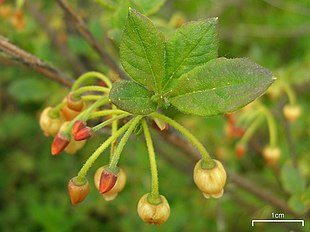



Botanical Name: Rhododendron groenlandicum
Common Name: bog Labrador tea
Family: Ericaceae
Distribution/Origin: North western US, BC
Leaf: leathery, pubescent, green to dark green, elliptic to linear, margins rolled under, rusty hairs on underside
Bud: alternate
Flower: floriferous corymbs, perfect, showy white, May-June
Fruit/Seed: brown capsules, Sept
Stem/Bark: brown to grey, slightly rough
Size: 2-4’ height, 3-5’ spread
Habit: dense
Form: round
Soil conditions: bog, peat rich
Moisture: wet
Sun: filtered shade to full sun
Exposure: wetlands
Landscape use: mixed shrub border, herb gardens, native planting, reclamation, small garden site, spring interest, wetland areas, woodland margin
Notes:




Botanical Name: Rubus parviflorus
Common Name: thimbleberry
Family: Rosaceae
Distribution/Origin: BC
Leaf: lobed, simple, palmate venation, softly flexible, glandular hairs/pubescent, bright green, orbicular-reniform, serrated margins
Bud: alternate
Flower: floriferous corymb, showy white, simple, May-June
Fruit/Seed: red, aggregate fruit, edible, July-Sept
Stem/Bark: exfoliating, multi stemmed trunk, brown
Size: 6-10’ height, 6-10’ spread
Habit: arching, dense, spreading, upright
Form: oval-horizontal
Soil conditions: rocky, gravelly or dry, well drained
Moisture: low
Sun: filtered shade, full sun
Exposure:
Landscape use: attracts beneficials, filler, group or mass planting, herb, reclamation, spring interest, urban agriculture, wildlife food, woodland margin
Notes:
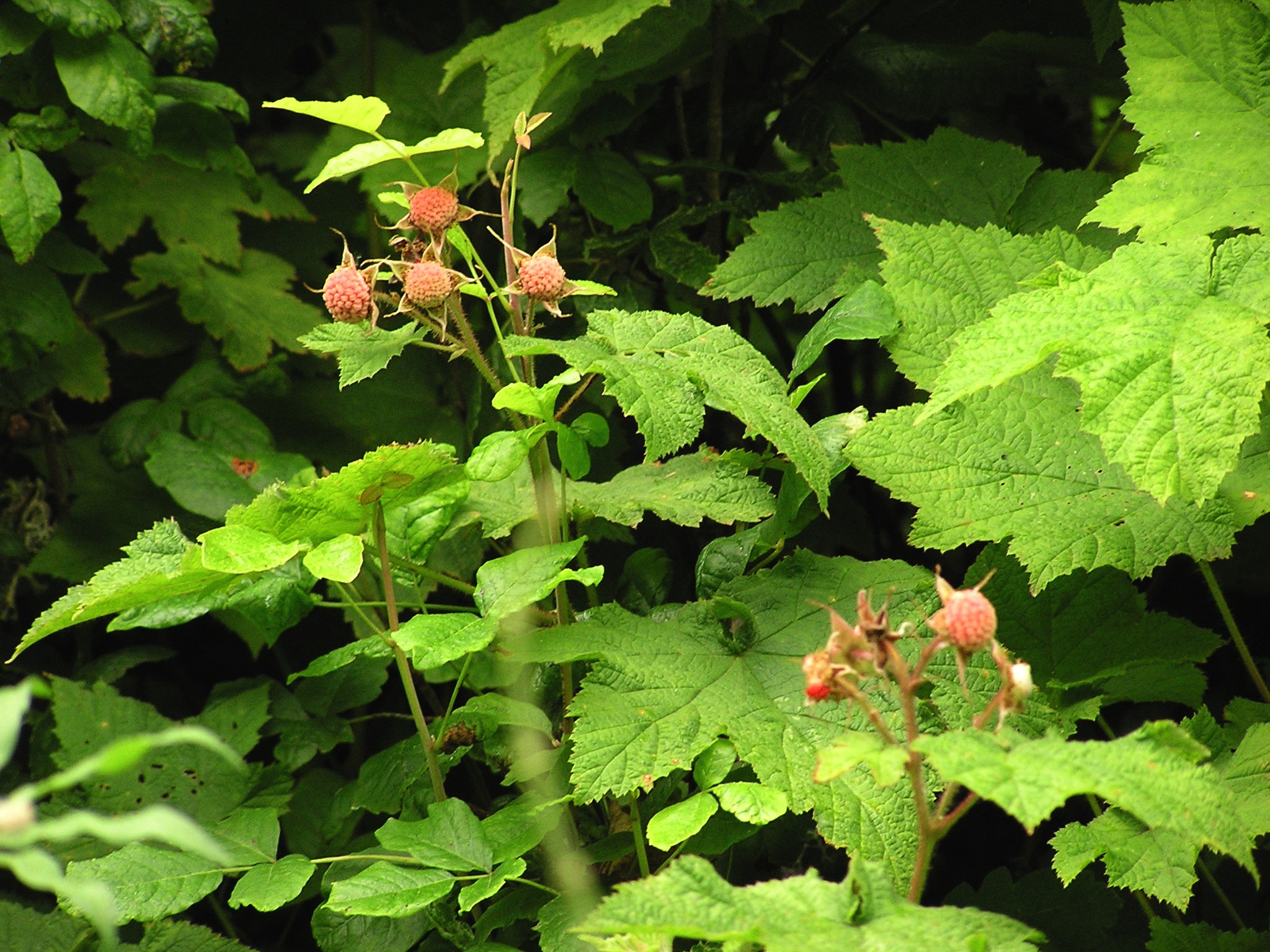


Botanical Name: Rubus spectabilis
Common Name: salmonberry
Family: Rosaceae
Distribution/Origin: B.C
Leaf: compound, soft flexible, lustrous-rugose surfaces, trifoliate, ovate shape, double serrated and pinnately lobed, leaflet armed on underside
Bud: alternate
Flower: clusters, perfect, pink, 5 petaled, April-May
Fruit/Seed: aggregate fruit, orange to red, Jul-Oct, showy
Stem/Bark: papery, exfoliating, orangey cinnamon colored, new stems green with armatures
Size: 4-6’ height, 5-6’ spread
Habit: dense, upright
Form: thicket, irregular
Soil conditions: acidic, well drained, humus rich
Moisture: moist
Sun: full sun to partial shade
Exposure:
Landscape use: urban agriculture, wildlife food, woodland margin, borders, underplantings
Notes:
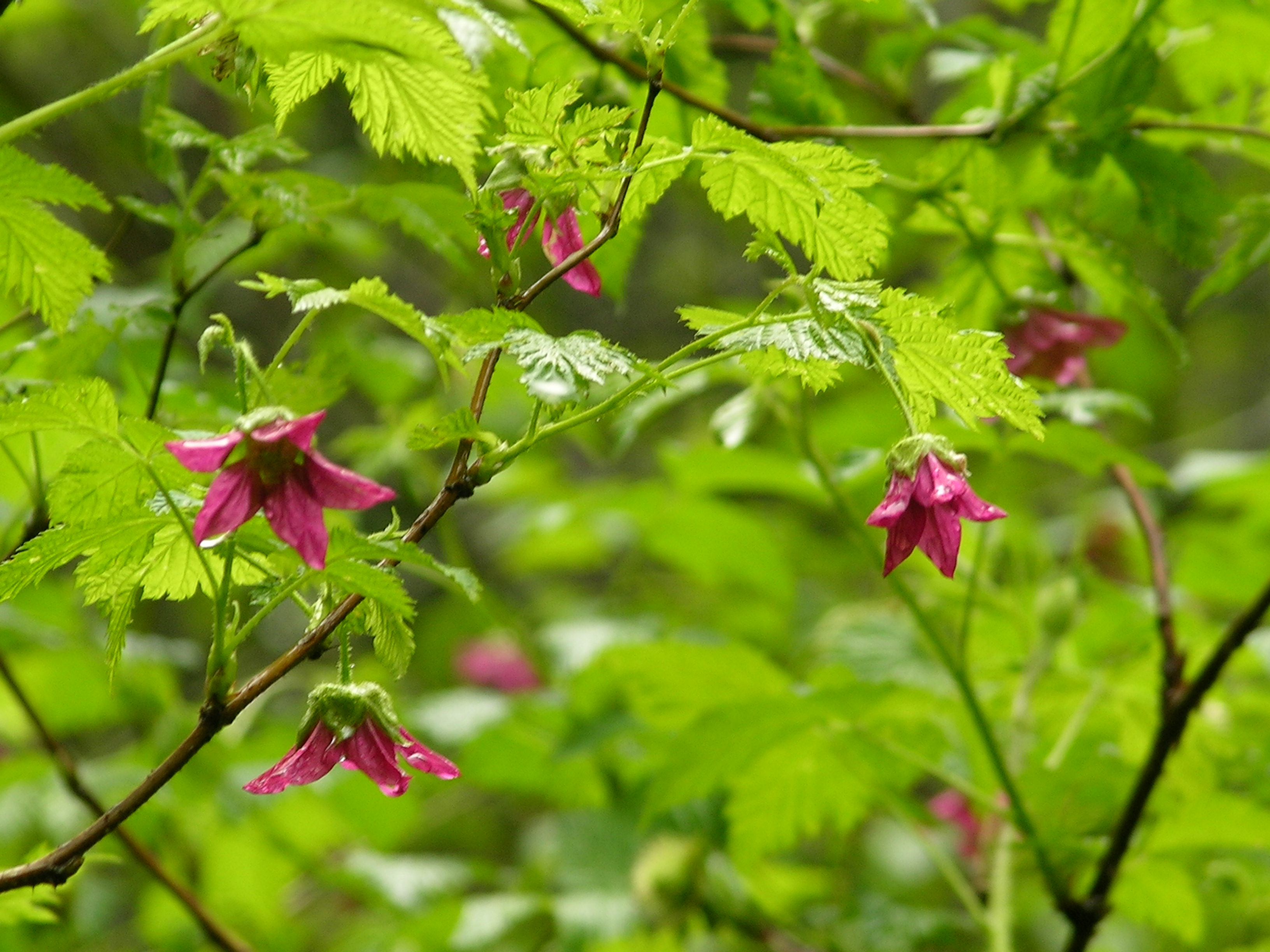



Botanical Name: Symphoricarpos albus
Common Name: snowberry
Family: Caprifoliaceae
Distribution/Origin: BC, north eastern United States
Leaf: simple, glabrous surfaces, elliptic shape, undulate & pinnately lobed margins
Bud: opposite
Flower: racemes of showy white blooms, fragrant, June-August
Fruit/Seed: white berries, 2 seeded
Stem/Bark: smooth, brown
Size: 4-7’ height, 3-5’ spread
Habit: dense, twiggy
Form: oval-horizontal
Soil conditions: well drained, lean
Moisture: medium
Sun: part sun-part shade
Exposure:
Landscape use: mixed shrub border, winter interest, attracts wildlife, shrub borders, slopes
Notes:




Botanical Name: Vaccinium ovatum 'Thunderbird'
Common Name: thunderbird evergreen huckleberry
Family: Ericaceae
Distribution/Origin: British Columbia, garden origin
Leaf: simple, leathery texture, ovate in shape with serrated margins, new growth is reddish, dark green in maturity
Bud: alternate
Flower: clusters of urceolate blooms, showy, white, April-May
Fruit/Seed: purple to black berries, Sep-Oct, edible
Stem/Bark: red, tan to brown, exfoliating
Size: 4-7’ height, 3-5’ spread
Habit: arching, dense, upright
Form: rounded
Soil conditions: acidic, humus rich, well drained
Moisture: low to moderate
Sun: deep shade, filtered shade, full sun to partial shade
Exposure:
Landscape use: floristry, attracts birds, ground cover, group or mass plantings, mixed shrub border, small garden space, spring interest, urban agriculture, woodland margin
Notes:




Botanical Name: Vaccinium parvifolium
Common Name: red huckleberry
Family: Ericaceae
Distribution/Origin: south western US, BC
Leaf: blue to green, simple, glabrous surfaces, oblong shaped with entire margins
Bud: alternate
Flower: paired, urceolate, white to pink, blooms May-June
Fruit/Seed: red berries, edible, Aug-Sept
Stem/Bark: smooth, green, red to brown
Size: 6-10’ height, 5-7’ spread
Habit: twiggy, upright
Form: oval-vertical
Soil conditions: humus rich, well drained, acidic
Moisture: moderate
Sun: partial sun to partial shade
Exposure:
Landscape use: attracts wildlife, urban agriculture, woodland margin, wildlife food
Notes:




Botanical Name: Vaccinium vitis-idaea
Common Name: lingonberry, cowberry
Family: Ericaceae
Distribution/Origin: northern hemisphere, Eurasia, North America
Leaf: evergreen, glossy leaves, simple, entire margins, elliptic to obovate
Bud: alternate
Flower: hermaphrodite, small urn shaped flowers, terminal racemes
Fruit/Seed: juicy red berries, edible
Stem/Bark: spreads by dense underground stems, adult bark is thin and smooth
Size: up to 1’ height by 3’ spread
Habit: suckering, spreading
Form: compact, mat like
Soil conditions: acidic, lean, can tolerate poor soils as long as it is not alkaline, well drained
Moisture: constant moisture
Sun: partial shade
Exposure: extremely hardy, enjoys a good snow cover, grows poorly if climate is too hot
Landscape use: woodland garden, dappled shade, ground cover, acidic soils
Notes: grows in arctic tundra and boreal forests (cool!)



No comments:
Post a Comment